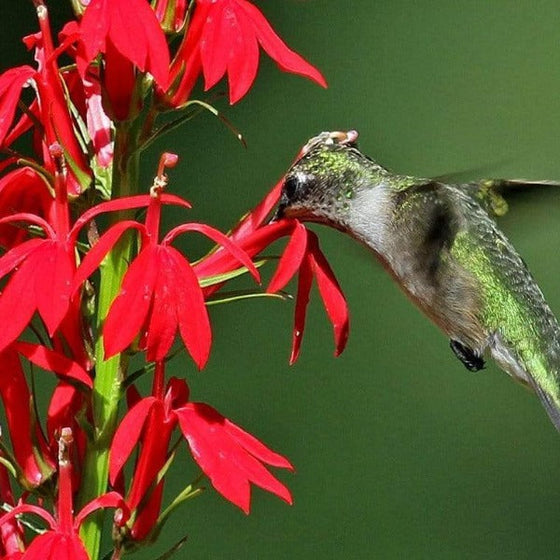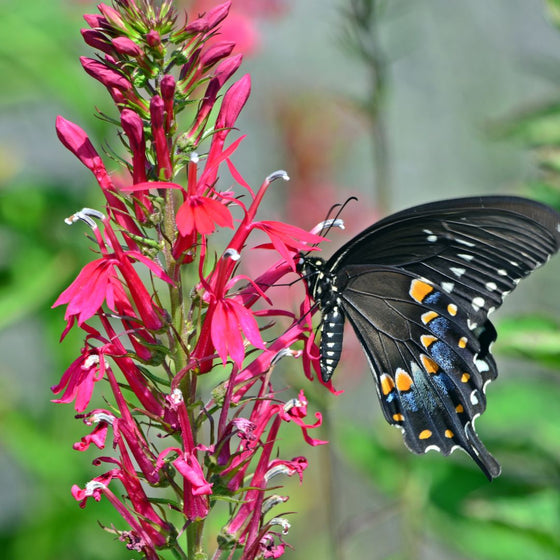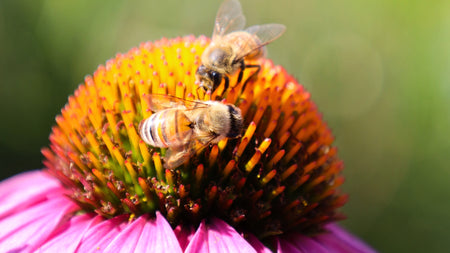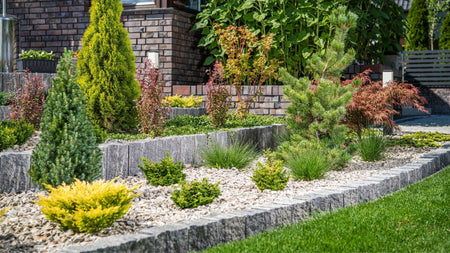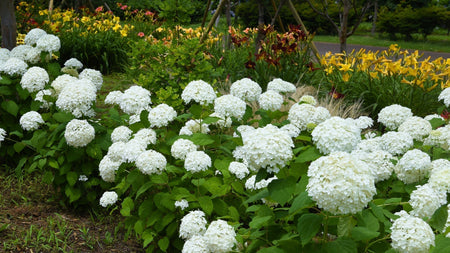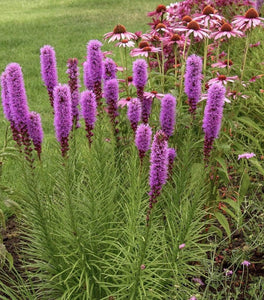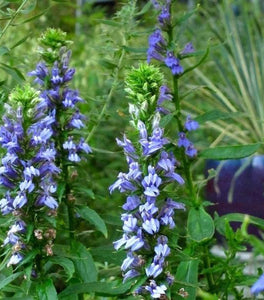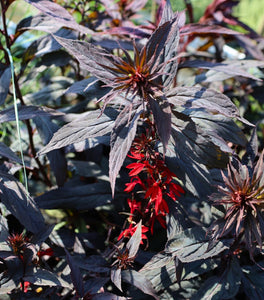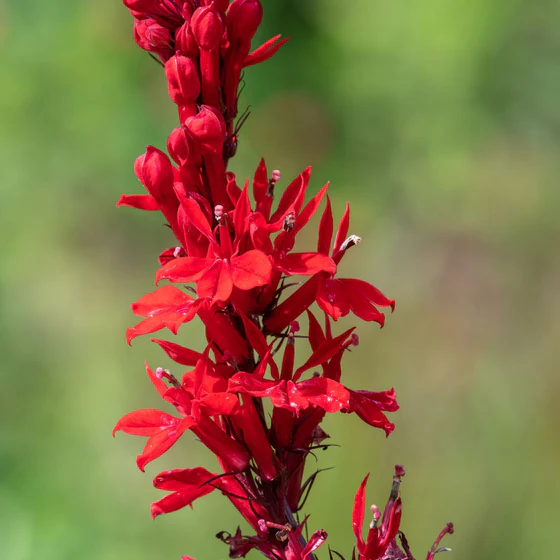
Images Depict Mature Plants
Cardinal Flower
Cardinal Flower (Lobelia cardinalis) is a bold, native perennial celebrated for its vibrant scarlet-red flower spikes that bloom in mid to late summer, creating a dramatic vertical accent in any garden. Growing 2 to 4 feet tall, this moisture-loving plant thrives in consistently damp soils, making it an ideal choice for rain gardens, stream banks, and pond edges. Its brilliant red blooms are a magnet for hummingbirds, butterflies, and other pollinators, providing essential nectar when many other plants have finished flowering.
Perfect for native plant gardens and pollinator-friendly landscapes, Cardinal Flower performs best in full sun to partial shade and prefers rich, well-drained soil that stays consistently moist. It adds color and movement to naturalized areas, wet meadows, and woodland borders while contributing to local biodiversity. Its striking flower spikes rise above a clump of dark green, lance-shaped leaves, offering visual interest and ecological value at the same time.
Lobelia cardinalis is a short-lived perennial that can self-seed under the right conditions, helping to sustain its presence in the garden with minimal intervention. For best performance, mulch around the base to retain moisture and protect the crown during winter. Whether you're creating a wildlife habitat, enhancing a native planting, or simply looking to add a pop of vivid red to your summer garden, Cardinal Flower is a show-stopping, pollinator-supporting addition to any moisture-rich landscape.
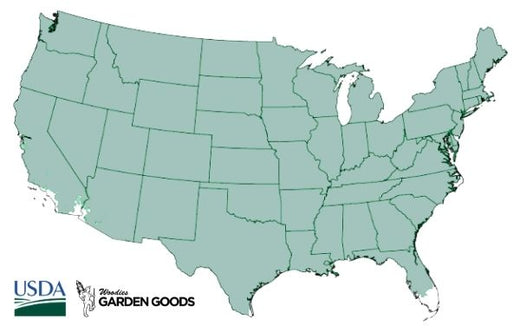
| Hardiness Zone: | 3-9 |
|---|---|
| Mature Height: | 2 to 4 Feet |
| Mature Width: | 1 to 2 Feet |
| Classification: | Flowering perennial |
| Habit: | Upright |
| Flower Color: | Red |
| Attracts: | Hummingbirds and butterflies |
| Soil Condition: | Prefers moist soil; can tolerate mild flooding |
| Water Requirements: | Water frequently, do not let dry out |
How to Care for Cardinal Flower
Before you buy a Cardinal Flower Plant, make sure to read about the recommended care instructions to keep this plant healthy and thriving.
How do I plant a Cardinal Flower Plant?
To plant a Cardinal Flower (Lobelia cardinalis), choose a location with full sun to partial shade and consistently moist, rich soil. This native perennial thrives in damp environments, making it ideal for rain gardens, the edges of ponds or streams, or any spot that doesn’t dry out. Dig a hole twice as wide and just as deep as the plant’s root ball, and gently loosen the roots before placing it in the hole. Backfill with compost-enriched soil, firm it gently, and water thoroughly to help the plant settle in. Spacing individual plants 12–18 inches apart allows for air circulation and room to spread. Once planted, apply a 2–3 inch layer of organic mulch around the base to retain soil moisture and suppress weeds, taking care to keep mulch a few inches away from the crown of the plant. Consistent watering, especially during dry spells, is key to establishing healthy roots. Cardinal Flower is a fantastic addition to pollinator gardens, native plant borders, and wetland restorations, offering bold color and ecological value. With proper planting and care, it will reward you with tall, fiery red flower spikes that draw hummingbirds and butterflies all summer long.
How should I water my Cardinal Flower plant?
Watering your Cardinal Flower (Lobelia cardinalis) consistently is crucial, as this native perennial thrives in moist to wet soil conditions. During the first growing season, keep the soil evenly moist by watering regularly—especially during dry spells—to help establish strong roots. Cardinal Flower naturally grows in wet meadows, streambanks, and rain gardens, so it prefers soil that never fully dries out. A soaker hose or drip irrigation system can provide steady moisture without splashing the foliage, which helps prevent disease. Once established, continue to water your Cardinal Flower whenever the top inch of soil feels dry, ensuring that the root zone stays consistently moist. In hot, dry climates or fast-draining soils, more frequent watering may be necessary. Applying a 2–3 inch layer of mulch around the base of the plant will help conserve moisture and regulate soil temperature. Proper watering not only supports lush green foliage and healthy growth but also encourages an extended blooming season—keeping those vibrant red flower spikes attractive to hummingbirds and pollinators throughout the summer.
How Should I fertilize My Cardinal Flower Plant?
Fertilizing your Cardinal Flower (Lobelia cardinalis) helps support lush growth and vibrant blooms, especially in nutrient-poor soils. In early spring, apply a balanced, slow-release fertilizer—such as a 10-10-10 or 5-10-5 formula—to encourage strong root development and healthy flower production. Scatter the fertilizer evenly around the base of the plant, avoiding direct contact with the crown, and water thoroughly to help nutrients reach the roots. For gardeners who prefer organic options, compost or well-rotted manure can be worked into the soil to provide a steady nutrient supply throughout the growing season. Cardinal Flower thrives in moist, rich soils, so if your planting site is already fertile, supplemental feeding may only be needed once per year. Avoid excessive nitrogen, which can lead to overly leafy growth at the expense of flower production. In poor or sandy soils, a second light feeding in midsummer can extend blooming and support pollinator activity through late summer. With the right fertilization plan, your Cardinal Flower will produce tall, fiery red flower spikes and lush green foliage that enhance rain gardens, borders, and native pollinator plantings

How and When Should I Cut Back My Cardinal Flower Plant?
Cutting back your Cardinal Flower (Lobelia cardinalis) at the right time helps promote healthy growth and maintain a tidy appearance in the garden. After the plant has finished blooming in late summer to early fall, you can deadhead spent flower stalks to prevent self-seeding if desired and to encourage a neater look. Once the foliage begins to die back naturally with the arrival of frost, cut the stems down to just a few inches above the ground. Removing old growth in the fall or early spring helps reduce the risk of overwintering pests and diseases while allowing room for fresh shoots to emerge. If you prefer a more naturalized or wildlife-friendly garden, consider leaving some seedheads in place through winter, as they can provide food for birds and shelter for beneficial insects. In early spring, be sure to clean up any remaining dead foliage before new growth begins. Mulching around the crown of the plant after cutting back helps insulate the roots and retain moisture as the growing season starts. With regular pruning and seasonal maintenance, your Cardinal Flower will return each year with its bold red spikes, attracting hummingbirds and adding vibrant color to wetland edges, rain gardens, and native plant borders.

